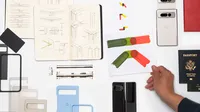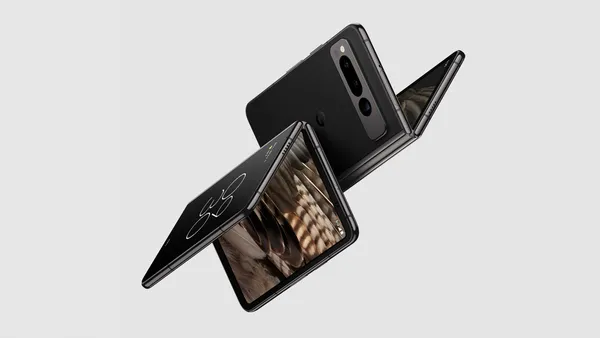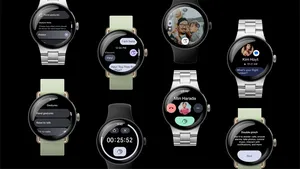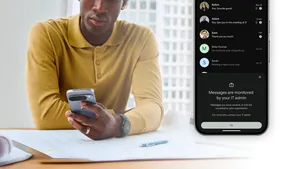How we designed and built the Pixel Fold's hinge

Over the past few years, George Hwang has folded lots of paper — in fact, he’s doing exactly that while we’re talking. “Early on, we would just fold and unfold pieces of paper to see that form,” he says, showing me the paper gently folded in half. “We had to find the right balance of making something super thin while also maximizing the display.”

George is a Pixel Product Manager, most recently for the Pixel Fold, and he’s been working on the foldables team at Google since its inception. Introduced at Google I/O, the Pixel Fold is our first foldable phone. It’s also our thinnest phone ever when it’s unfolded, and when folded, the thinnest of its kind on the market. Achieving a thin form factor was no small feat, and there’s one very important piece of Pixel Fold that made it all possible: its hinge.
The Pixel Fold has a custom-built, 180-degree fluid friction hinge. When it opens, the hinge is completely flat; it is moved entirely out of the way of the Pixel Fold’s display, which is what allows the phone to be so thin. “With other foldable devices you have the hinge components under the display, which drives up the thickness,” George explains. “So with our hinge, we moved these hinge components entirely to the ends of the device, out from under the display, which makes it much thinner.” The Pixel team not only had to design a hinge that would maintain an ultra-thin design, but they also needed a hinge that could stand up to constant use. “We definitely had our work cut out for us,” George says. “To put it simply, this is the most complex product I’ve ever worked on.”
For inspiration, the team looked at all sorts of different hinges — boxes full of hinges, in fact, which they examined in the lab. And they didn’t only consider mechanical ones, like those in car doors. They also looked for inspiration in surprising items like the aforementioned paper and books, says Sangsoo Park, an Industrial Designer at Google. “We wanted to recreate the way you can hold and close a book with one hand, and we wanted to replicate how both sides of it seamlessly blend together when shut,” Sangsoo says.
One specific kind of book they looked at that felt especially relevant was a passport book. On the way back from vacation in Korea, Sangsoo was thinking about the best form-factor for Pixel Fold — then he looked down at the passport in his hand. “I noticed it had a nice proportion when closed and opened,” he says. “It feels like a little bit of a metaphor, too — your passport holds your memories and it’s where so many of your stories begin. And it’s thin and pocket-able enough to carry everywhere we go.”
Whatever the team took inspiration from, Sangsoo says the ultimate goal was for the hinge to look and feel effortless. One of the first design aspects the team focused on to achieve this was the torque, or force, needed to open and close Pixel Fold. They needed it to be both really smooth and consistently reliable. The torque they eventually landed on creates what Sangsoo describes as a satisfying “vacuum” sensation when you fold the phone open and shut. That folding action even makes a specific sound. “You get this satisfying clap when it shuts, and we really liked it,” George says.
The Pixel Fold’s stainless steel hinge is flexible enough that it doesn’t take too much force to open, but strong enough that it can hold a clamshell position.

To test how well the hinge opened and closed, the team manually folded and unfolded a prototype over and over… and over and over and over. They even built a machine that opened and closed the Fold repeatedly to create their own data to learn from, tuning tiny details right up until the end to get it just right. “We wanted it to firmly close, so we needed to balance the magnets to find that happy place,” Sangsoo says.
They also incorporated user testing for feedback. “We heard from users that they were concerned about the hinge holding up,” says George. “Which is why we obsessed over building the most durable hinge possible.” George says when thinking of durability needs, they also factored in people like himself who repeatedly click their pens in meetings. “We’re going to be the type who fold and unfold the phone a lot, and it needs to withstand that,” he explains. This is also why the team decided to make the hinge from heavy-duty stainless steel, which Sangsoo points out is stronger than aluminum. “Plus, it has a nice shine,” he says.
George, Sangsoo and the larger team who worked on the Pixel Fold’s hinge are incredibly excited for people to get the phone into their hands so they can experience all the little details themselves. And even though they’re done working on this particular device, it’s definitely left its mark. “If the hinge on a car door isn’t just right,” George says, "I’m going to notice it from now on!”







